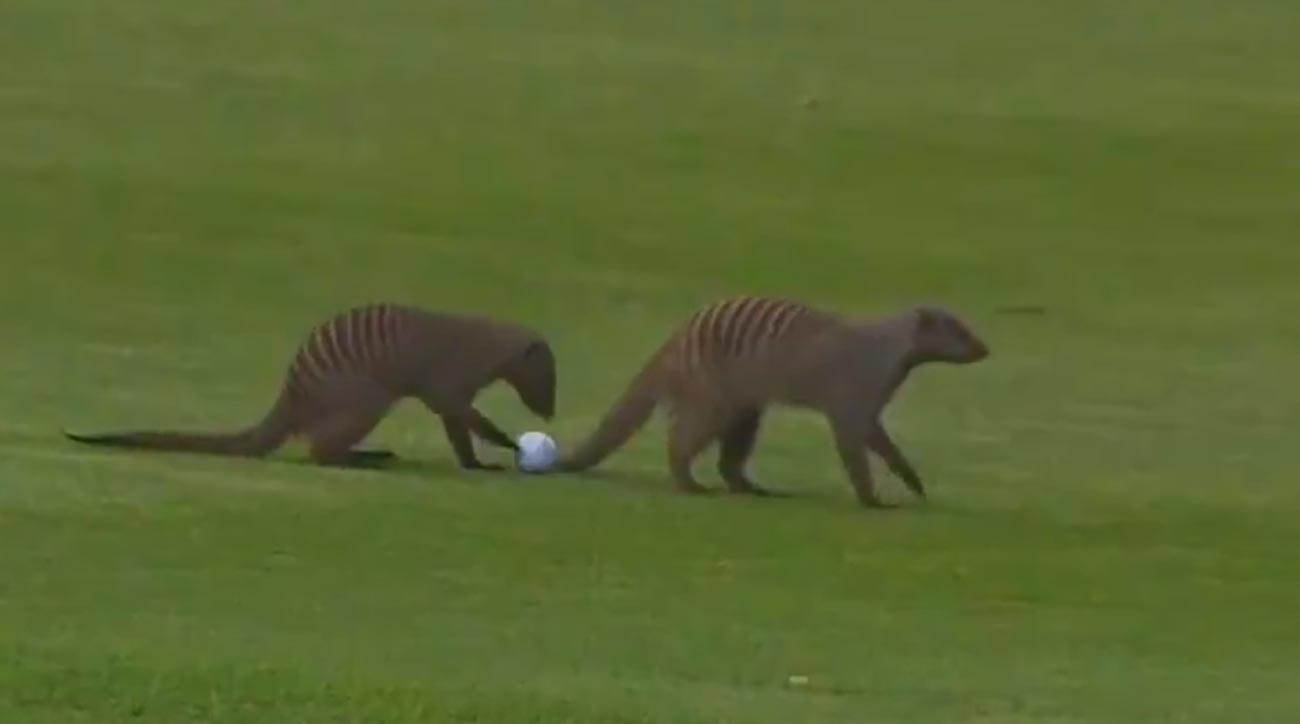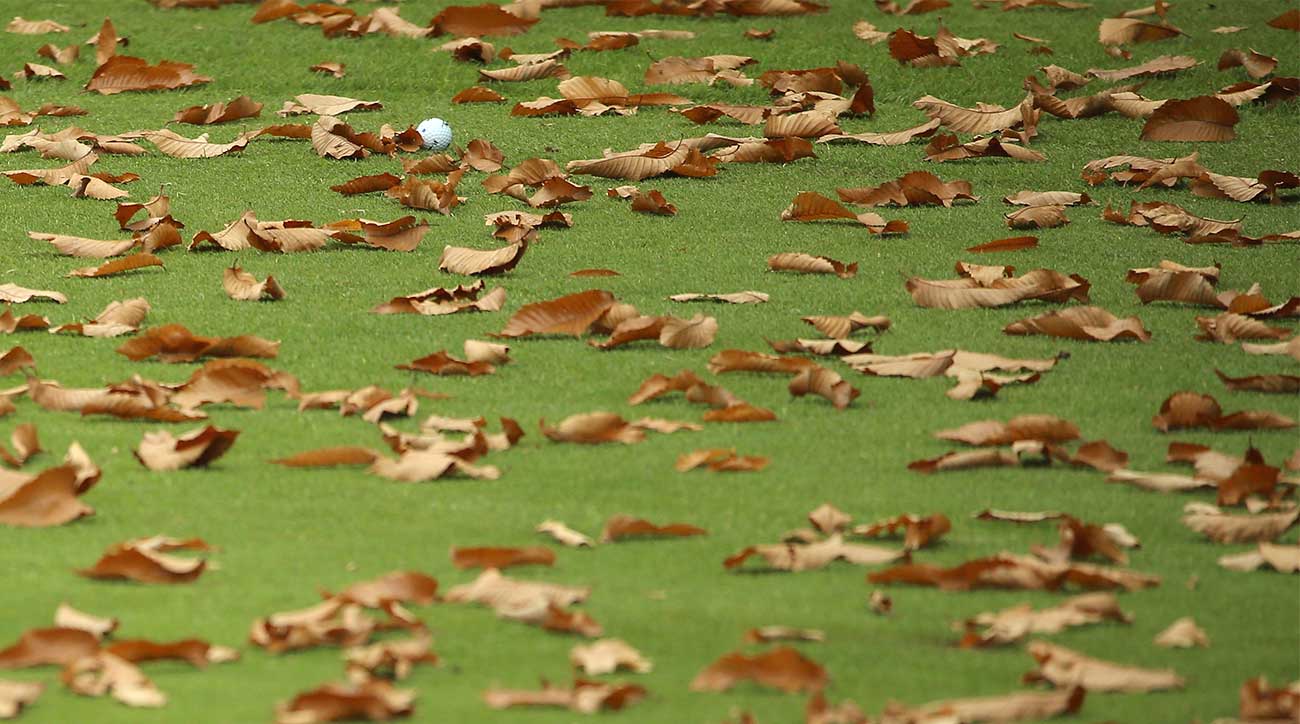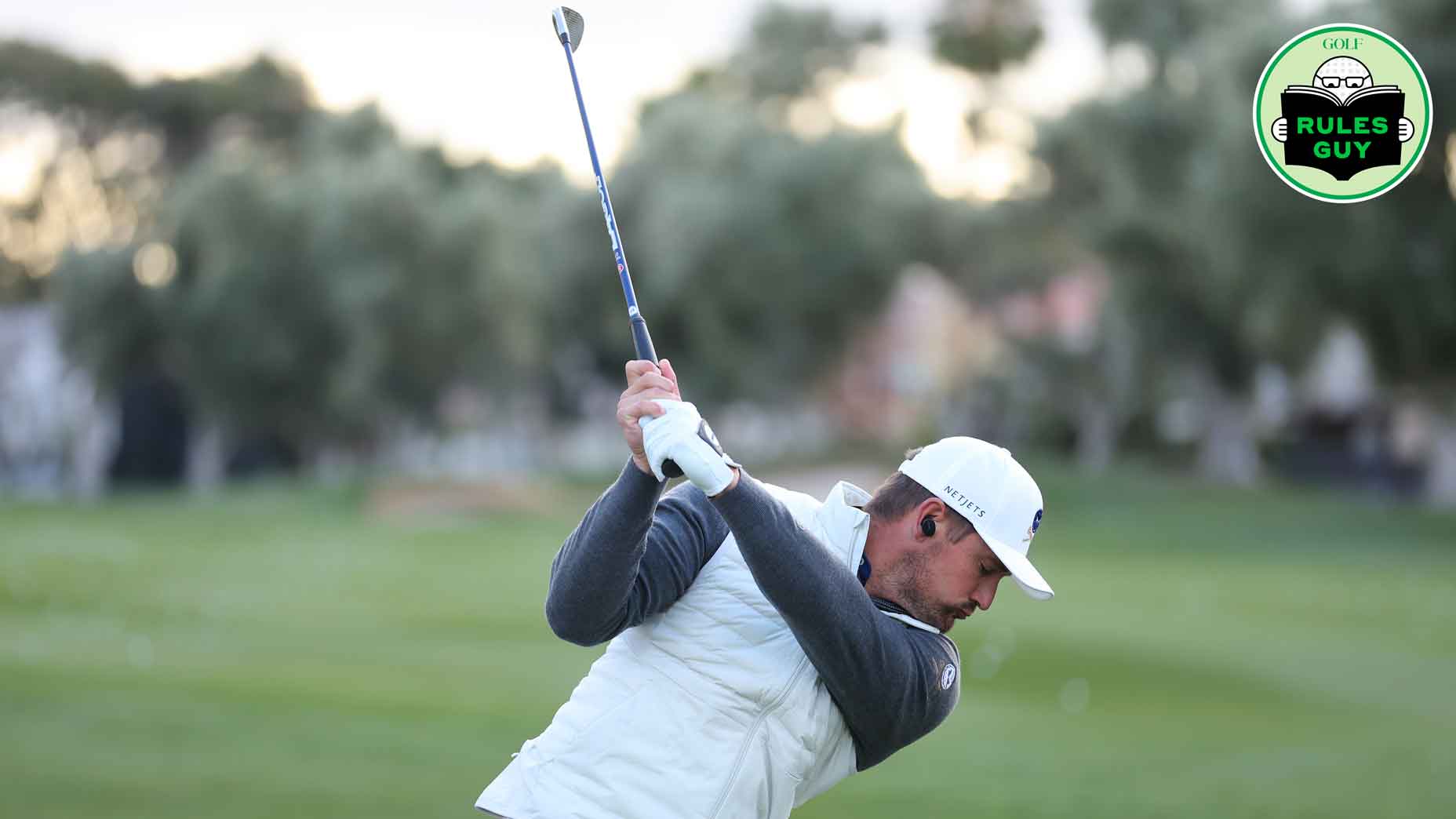 The simple ball-drop rule not every golfer knows
The simple ball-drop rule not every golfer knows
Rules you can use: What to do if wild animals attack your golf ball

The European Tour is in Sun City this week for the Nedbank Golf Challenge. Every year at the Nedbank the pros are treated not only to a scenic course, but also close encounters with the spectacular wildlife that call this South African track home. Occasionally, the animals even interrupt play.
In one particular video shared by Henrik Stenson this week, a tee shot lands in the fairway, only to be immediately pounced on by a pair of local mongooses, who move (and gnaw on) the player’s golf ball.
Anyone know the rule for a mongoose attack on your golf ball?😂 Got to love Sun City! #NGC2019 pic.twitter.com/Jh1czA7uSl
— Tommy Fleetwood (@TommyFleetwood1) November 14, 2019
You might not come into regular contact with mongooses during your weekend round, but there’s a good chance you’ll have to contend with squirrels, birds and even alligators for the southeastern hackers among you. So what exactly are you supposed to do if an animal moves your ball during a round?
The good news is the rules are pretty simple when it comes to this problem, and no penalties will be dished out to player or animal. However, there are a few wrinkles.
ADVERTISEMENT
If your ball is resting still in the fairway when an animal decides to mess with it, you proceed under Rule 9.6 and replace the ball on its original spot (if you move the ball yourself, you will get penalized — cc: Billy Mayfair).
The rules are slightly different if your ball is in motion when it comes into contact with an animal, as happens in the video shared by Stenson. In this scenario, you simply play the ball as it lies, as directed by Rule 11.1.
There are two exceptions to this rule. If you’re on the putting green and your ball in motion is deflected or moved by an animal or other outside influence, the stroke does not count, and you must place the ball on its original spot and hit the putt again.
One other potential scenario, albeit a far more unlikely one, is if your ball comes to rest on or against an animal. If this happens to you, and your ball is resting against the tail of a mongoose or in the mouth of a Florida gator, Rule 11.1.b affords you free relief. You either need to place the original ball (or a replacement) at the estimated point under where it came to rest on the animal, or, take a free drop one club-length from the original spot and no closer to the hole.
If your ball isn’t resting on an animal, but the creature is close by, and the animal has big teeth and/or venomous fangs, you are still allowed to take free relief under the “dangerous animal condition” exception.
Now you should have all the information you need to contend with animals on the golf course. But remember, these rules only protect your score, they won’t protect your person. So be mindful of the wildlife on the courses you play, and if you feel the urge to pet a gator, or a mongoose for that matter, just say no and pet your headcover instead.
To receive GOLF’s all-new newsletters, subscribe for free here.
ADVERTISEMENT







